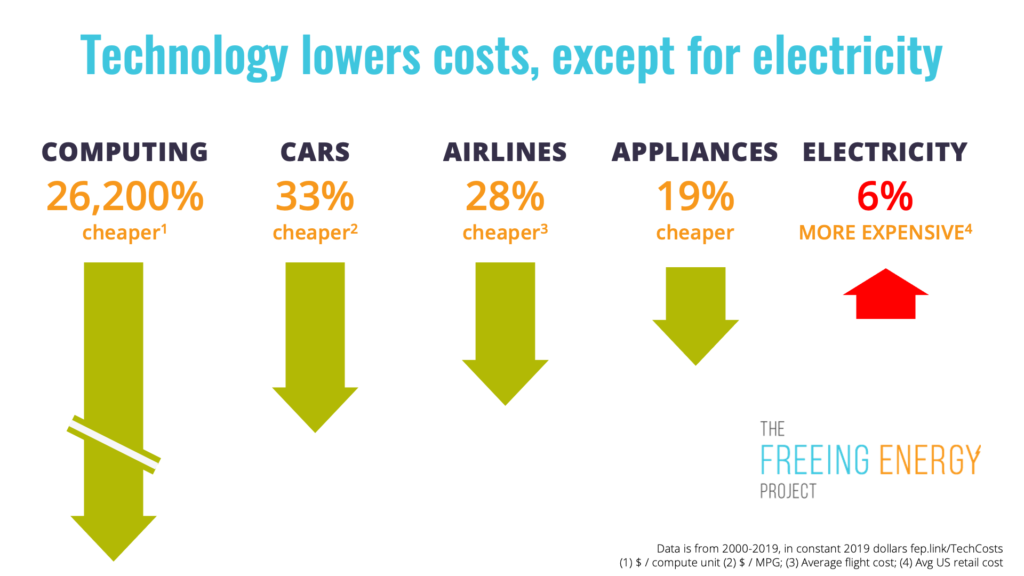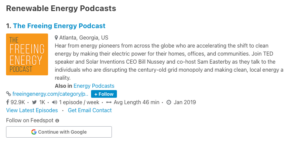Technology transforms how things are made and used, almost always lowering costs along the way. Thanks to technology, industries like transportation, food, and data processing are now more accessible and more affordable than ever before.
The cost of automobile efficiency ($/mpg) has declined 33% and the average price of an airline ticket has dropped 28%. Appliance prices have decreased by 19%. Computing, which is pure technology, has seen its cost drop 26,200% (262-times) over the last 20 years (all in real 2019 dollars). Therefore, it’s somewhat surprising that electricity — the foundation of most technologies — has actually gotten more expensive over the last few decades (Freeing Energy 2019).
What is going on with electricity?
It’s not electricity that’s getting more expensive, it’s the cost of the centralized grid that’s going up. New technologies like natural gas, solar, and wind are actually making electricity generation cheaper but they are trapped in a complex system that is full of expensive regulatory requirements and legacy costs. Some of the challenges to a cheaper grid include:
INCREASED TRANSMISSION COSTS. This is the largest factor driving up electricity prices. Over the last 20 years, annual transmission investments have grown 10-times, from $2 billion to over $20 billion in 2016 (EIA 2018). These investments include replacing retired equipment, hardening against extreme weather, and expansion to integrate new renewable and natural gas plants. Even with these increases, wildfires in California and the nine-month blackout in Puerto Rico suggest even more investment is required.
STRANDED ASSETS. New electricity generation technologies have become so inexpensive that it is often cheaper to build a new solar, wind or natural gas plant from scratch than it is to continue operating an existing coal or nuclear plant (Bloomberg 2019). But even when a coal or nuclear plant goes unused, utilities are still stuck with paying off construction financing and disposing of wastes. It’s somewhat ironic that cheaper electricity can actually raise costs when it’s used as a part of a giant utility.
So, if electricity is getting cheaper but those savings are lost within a sprawling utility, how can we take advantage of the cheaper alternatives like solar? Check out our upcoming article that shows a decade of trends and where they are taking us.




